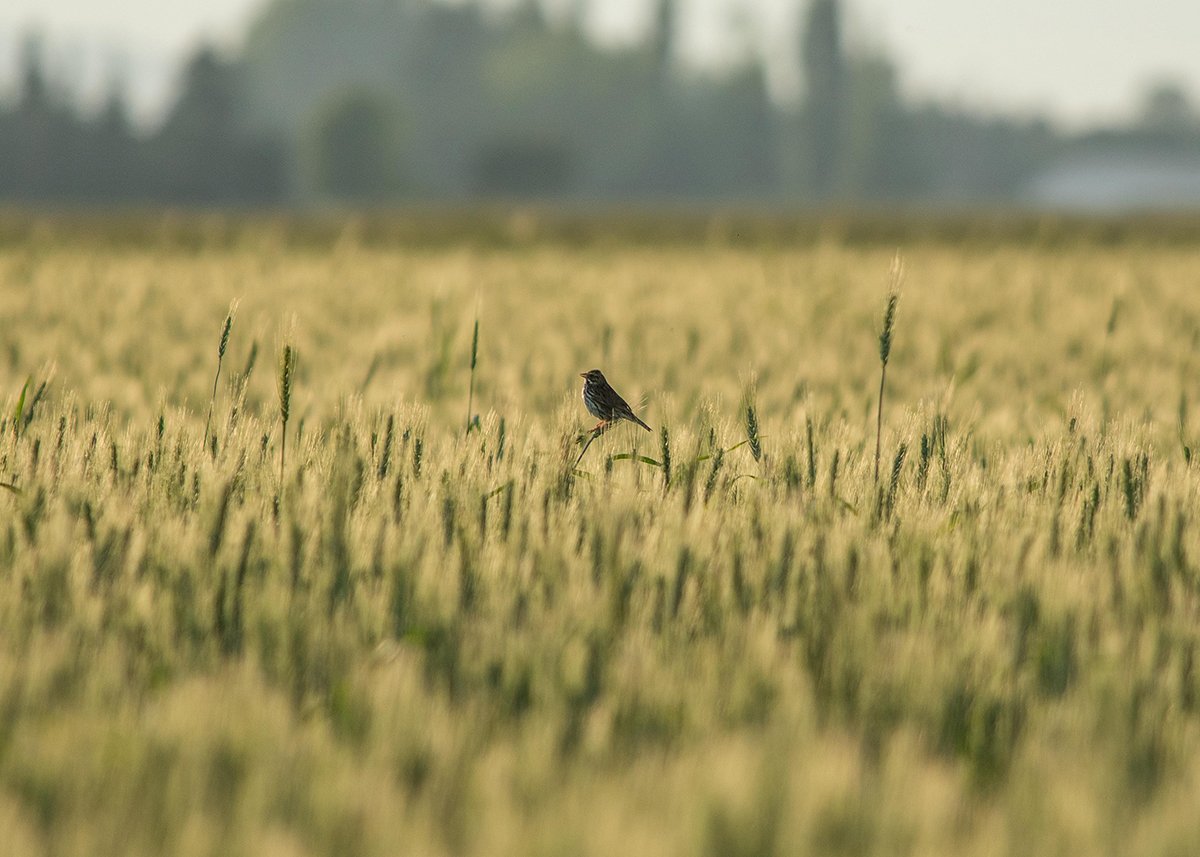Bird Wise Observations: Row Crop Farmer Cristina Waltner
We’re talking to various user groups for their experience and best practices in response to the visiting birds to the working agricultural landscape of Skagit Valley. Cristina Waltner is a third generation row crop farmer in Skagit, operating the family business Treehouse Produce with her brother in the valley between Mount Vernon and La Conner. The farm produces crops across many acres of open field, and manages wild bird activity year-round, not just in the winter when the masses of arctic migrants visit. Waltner speaks to the challenges the birds bring to crop growing, as well as her admiration for the beauty and variety of these avian neighbors.
My dad’s family started the farm in 1941, it’s a regular old farm family story. Our family grew the business bigger and in a few different directions, whatever the market demand has been for row crops.
The Skagit valley has evolved from growing grass (like wheat and barley) to canning produce to row crops and dairy. We grow all kinds of berries, broccoli, potatoes, wheat, barley, squash. We have an eight to nine month season of sales between the beginning of May and the end of January, selling directly to stores or distributors. We start selling berries at the beginning of May or June, and so on through the season to January, finishing with potatoes.
Snow geese (Photo: Cedarbrook Studio)
I think the birds are beautiful. We didn't have many snow geese around when I was a kid in the 1970s and 80s, and only a few swans. There were a few snow geese back then, mainly concentrated on Fir Island. Seeing them flourish now (across the valley) is wonderful and I can understand why people want to see them. The snow geese and swan numbers really started to increase in the 1990s in Skagit, and now they are distributing to Snohomish and Whatcom counties, too.
The birds put a lot of pressure on the grass crops, though. The birds will concentrate on the grasses grown here–turf seed, wheat, and silage grass that the dairy farmers plant–and they can destroy the crop. We grow the turf grass for the landscaping market and the birds still eat it. If you drive through a place and see six-inch rows that are 12 inches apart, that’s the turf seed grass. A silage field is level and even.
Red-tailed hawk (Photo: Cedarbrook Studio)
It’s amazing how birds can eat down a grass crop to the root. It’s a challenge to manage a healthy population of geese with the financial cost to the farmer.
Sparrow on grain (Photo: Cedarbrook Studio)
Snow geese have impacted my farm. Anyone who puts in winter wheat, we have to scare the birds off it. I’ve seen our neighbor in his 4-wheeler trying to shoo them off his crop. We plant certain crops in response to the market, and to the geese, it’s just lunch. Flocking ducks like widgeons are also aggressive grass eaters (like the geese) and they can erode the drainage systems.
Sometimes birds are helpful. Swans eat the potatoes that we’re not able to dig, they break the potato waste down.
Birds are an issue on other crops, too. Starlings create a heavy pressure on blueberries. You see a flock of starlings coming in, a huge flock of them. They like the ripe berries and land on the bushes and knock off the ripe fruit that they don’t eat. There are varieties of blueberries that they prefer. They are just like humans in that they prefer the sweeter berries over the tarter ones!
We use different types of mitigation strategies around the valley. Some people use cannons that make a noise and are harmless to the birds, but the birds learn it’s not a threat and return after about an hour. They’re very smart.
Netting might make a difference but it’s not feasible to net a 30 to 40 acre field. We’ll try to shoo them out. We watch for them and if there’s an area where they’ve had brunch, we’ll move past that.
Birds on the food crops is an issue of food safety. When you get a lot of bird activity you’re watching for droppings and pecked berries. You’re having to add another dimension to harvesting, making sure you’re monitoring for that.
Other birds? We see waxwings, goldfinches, and blackbirds. You do see a few hawks moving through and we’re always happy to see them.
One day I was driving on our farm and waiting near our barn with my son who was seven at the time. We saw a snow goose flying toward our barn with an eagle on its tail. The barn door was open and the goose was heading toward it. I jumped out of the car and had my son honk the horn to distract the eagle and the goose flew into our barn.
That eagle wanted lunch but not that day! I usually keep my head down and let nature take its course but on that day I reacted in the moment!
As told to Bryony Angell. This interview has been lightly edited for length and clarity.



